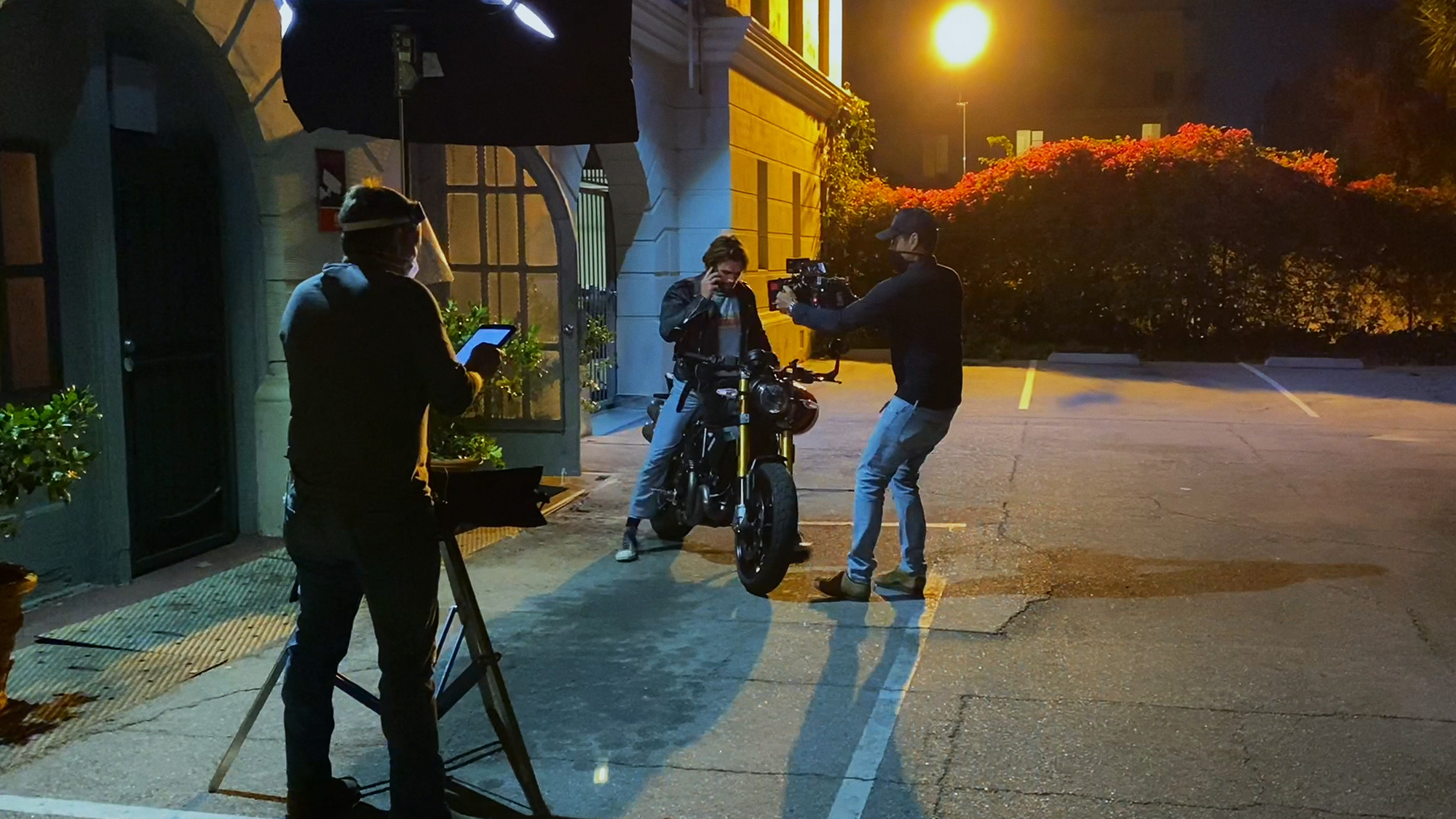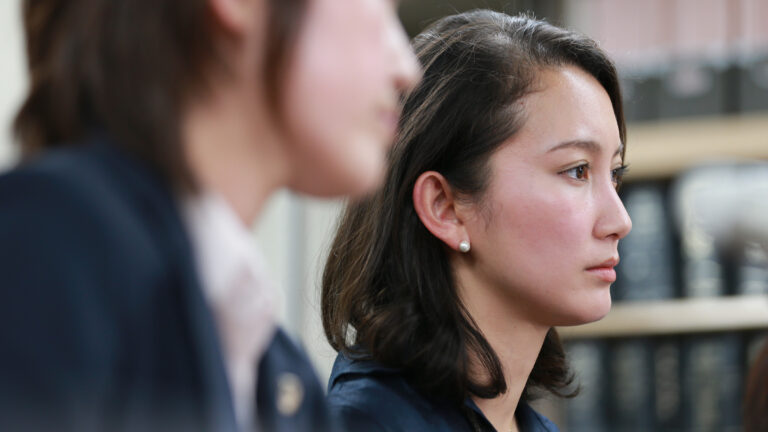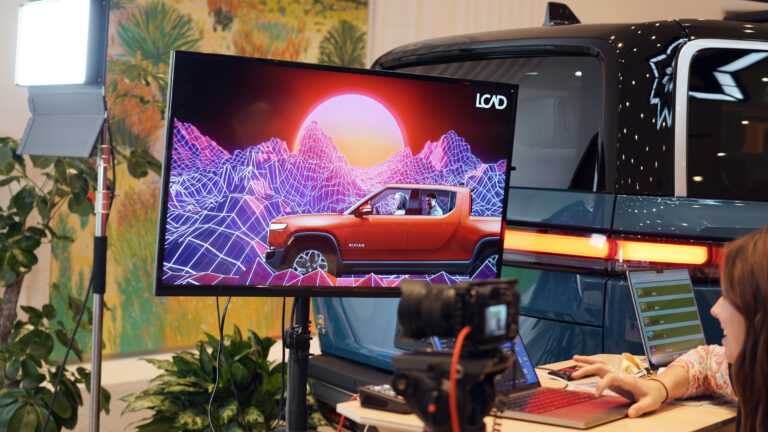A global pandemic. A city on lockdown. A populace documenting their lives and sharing their experiences using FaceTime and Zoom to stay connected. It’s 2020 in a nutshell.
Or is it?
Songbird, the new feature from director Adam Mason, sets a classic love story during the hypothetical fourth year of the lockdown in 2024 Los Angeles. Written and produced during the 2020 pandemic, there’s no better case of art imitating life.
As the first feature film to return to production with a union crew during COVID, it also provided a rigorous test case for Frame.io C2C, which enabled them to follow social-distancing protocols without sacrificing creativity. If anything, this film reinforced the idea that catastrophic events can lead to innovations that shake up the status quo and forever change the way we create and share stories.
We hope you’ll settle in to learn about how a group of innovative filmmakers at the top of the industry combined their passion for movies with their need to keep creating, and used cutting-edge technology to deliver a full-length feature in the midst of the shutdown—and how this experience has opened their eyes to new ways of working for the near future and beyond.
A new reality
In March 2020, Adam Mason was preparing to direct a film from a script he’d written through Blumhouse Productions when the first wave of the COVID pandemic began spreading through the U.S. “The only thing I could really compare it to was 9/11,” he says. “You could see this nightmare unfolding before our eyes. For about five days we didn’t know if we would be able to keep going, and no one really wanted to pull the trigger but, of course, we were shut down.”

Concerned about his wife and children, his family in England (where he’s originally from), and having had his passion project suddenly evaporate, he was understandably dispirited.
The next morning, he got a call from his longtime writing partner, Simon Boyes. “He sounded very gung ho and excited,” Mason says. “He was like, ‘Look, we’re going to make a movie. We’ll write it and we have loads of friends who are actors, and we’ll film it with cell phones and Zoom.’ So we wrote a 12-page document and Simon called it Songbird, which is the name of one of my favorite Oasis songs.”
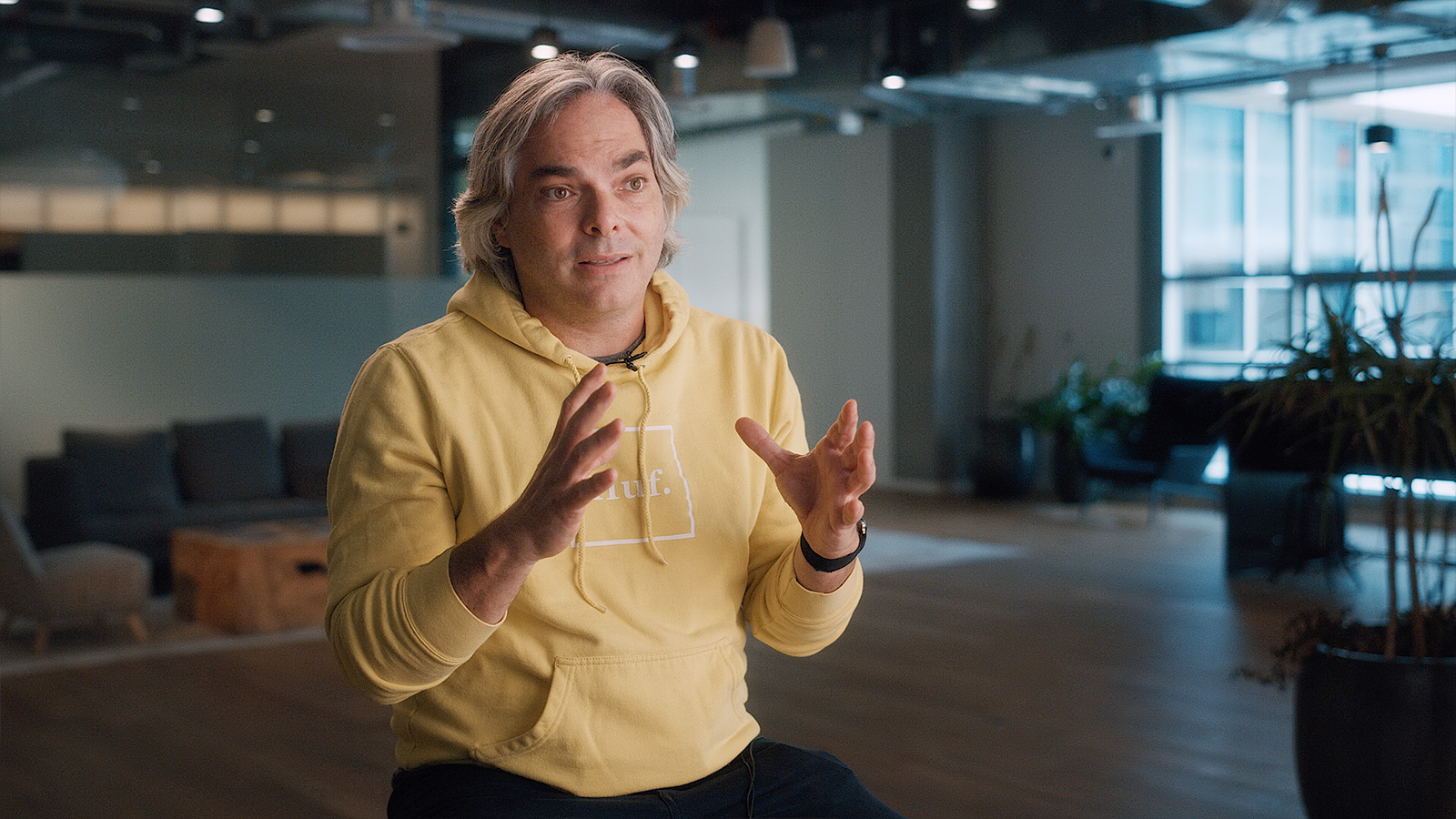
Mason had been collaborating with producer Adam Goodman only a month earlier on a different project, and immediately wanted to show him the treatment. “I liked his spirit of moviemaking,” Mason says.
“He’s extremely inventive and has been talking about doing work in the YouTube space. I’ve got three kids who are YouTube obsessed, and I could see that he has an interesting way forward about how Hollywood is going to change. So I felt like Songbird and Adam Goodman would be the perfect match.”
Goodman is equal parts industry veteran, historian, and visionary. Beginning as a production assistant for John Hughes while still a high school student in Chicago, his career took him to Paramount Pictures where he served as President for six years, shepherding massively successful projects from the J.J. Abrams Star Trek reboot to the Paranormal Activity franchise. Since then, he’s started his own production company, Invisible Narratives, whose stated mission is to create “disruptive storytelling that fuels culture in partnership with people of influence.”
In a 2015 interview with The Hollywood Reporter, Goodman stated, “When you look at how we produce most movies today, it’s largely based on an inefficient hundred-year-old process using production techniques and film technology that have calcified. We’ve never hit the pause button and said, ‘If we were starting this business today, how would we make movies?’”
Noting that the studio system as we know it today was born out of the 1918 Spanish Flu pandemic, Goodman views our current reality as a similar catalyst for change in the industry. “This is a moment, right now, where everything needs to turn on its head and we have to say, “We have to make things differently, shoot them differently, market and distribute them differently. Because the audience is consuming content in ways that are different than ever before.”
When Goodman approached producer/partner Jason Clark of Catchlight Films with Songbird, Clark was ready to take on the challenge. “When we signed the deal to participate, our interest was in this brave new world—not just in the streaming service in traditional media that exists, but in this new media that is finding a foothold and growing,” Clark says.
“Catchlight first and foremost believes in the craft of filmmaking and the people engaged in that craft. We felt like we had reached an emotional nadir with the entire industry not knowing when things would turn. And the only people that could move forward would be those who are nimble or independent, or using smaller crews. So we latched on to the idea of finding a way, with a smaller footprint, that would help us get back to work safely.”
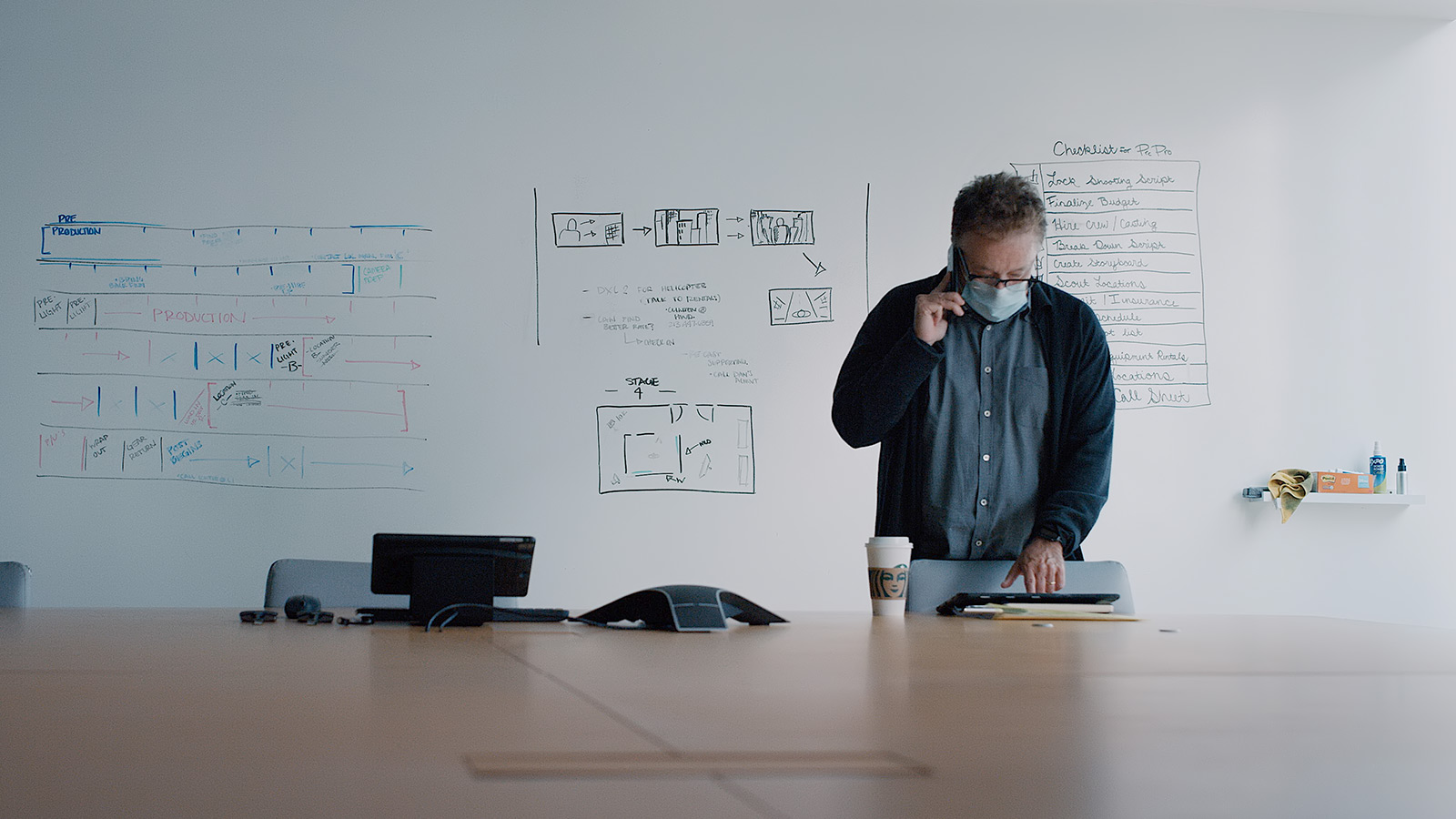
A new workflow
Max Votolato, another British-born filmmaker who grew up with the dream of making it in Hollywood is, like Mason, a skilled cameraman, editor, and director. As a motion picture technology expert and self-proclaimed tech enthusiast, he embraced the challenge of making a film during the pandemic as an opportunity to discover new tools and methodologies.
The team explored numerous options, from having the actors film themselves from their homes with Mason directing through FaceTime, to using a remote-controlled camera rig, to having the DP on the set in a bunny suit.
“Everything had stopped,” Votolato says, “yet we knew we were going to do this project.” And this was even before the industry white paper outlining COVID safety guidelines had been published with all the established regulations outlined.

Along with DP Jacques Jouffret, Votolato developed a workflow that would give them artistic freedom safely and reliably. Jouffret knew Frame.io SVP of Innovation Michael Cioni from previous projects, so the team contacted Cioni to get a “live” demo of their C2C system. Once they saw it, they knew that it was the way forward. “When Jacques came aboard, he had determined that he was going to use the RED KOMODO, and that was a new part of the kit that was innovative in our workflow,” Votolato says. It was, in fact, one of the first beta KOMODOS available, and quite possibly the first feature shot entirely with it.
“But one of the biggest innovations that came around was Frame.io,” he says. “It meant that we could be on set without being physically there, and it revolutionized the way I was thinking about all of this.”
The C2C system works by mounting a Teradek BOLT transmitter onto the RED KOMODO which, each time the camera is triggered to record, sends a feed wirelessly to a Teradek CUBE that is connected to the Frame.io cloud, where it’s transcoded and becomes automatically available for viewing on iPhones, iPads, or monitors. It also streams the proxies directly into Adobe Premiere, Final Cut Pro X, and DaVinci Resolve, enabling editors to begin working on footage immediately, from anywhere.
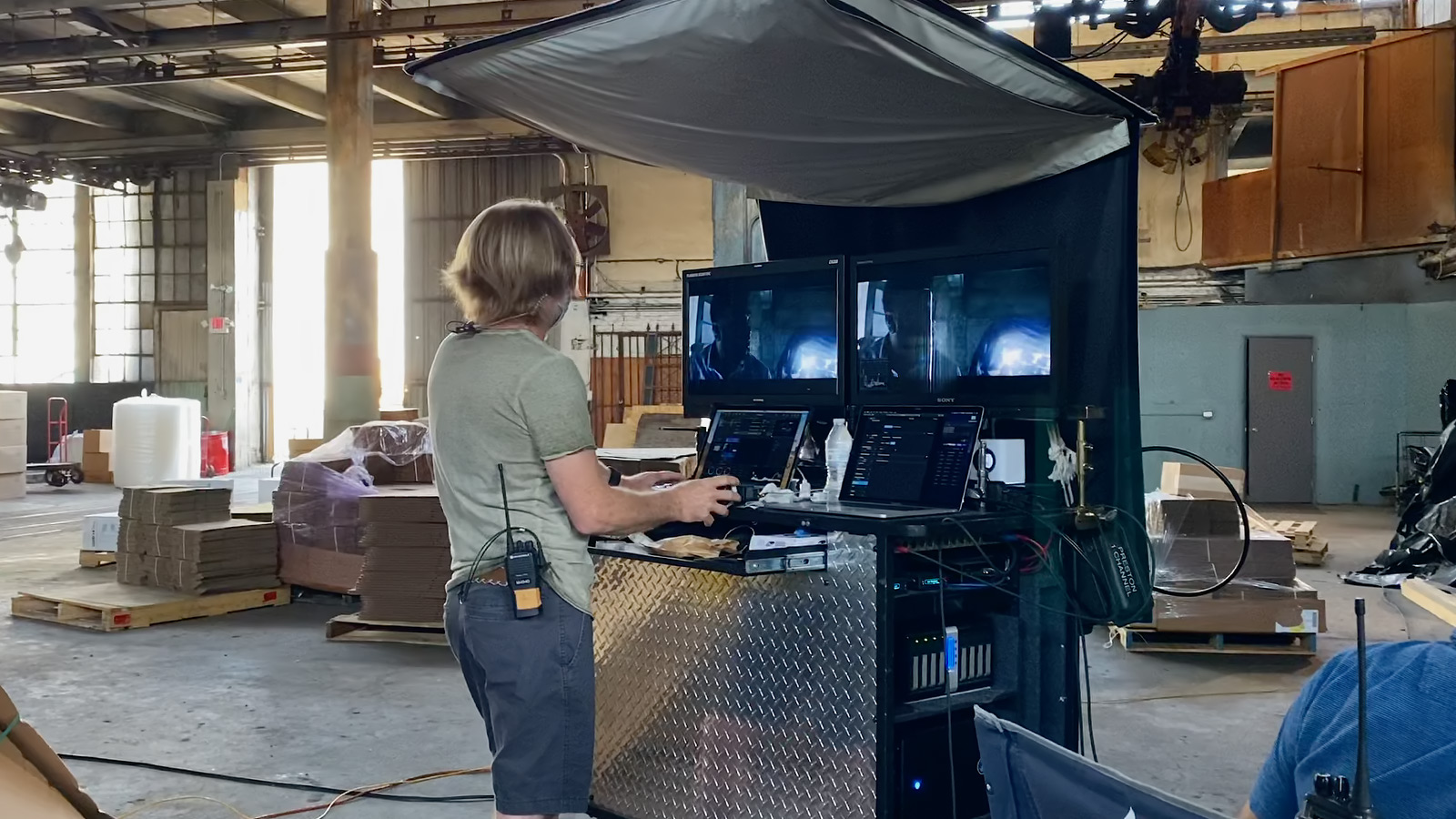
The ramifications for Songbird were huge.
Because there was no need for an on-set video village, a notorious spot for crews to congregate, many of the producers, including Goodman, Votolato, and producing partner Michael Bay, were viewing the footage from their homes. But even those who were physically on set (like Clark) received the dailies on their phones or tablets and were able to view them at a safe distance from each other. “Everyone had a video village in their hand, and the process was instantaneous,” Votolato says.
“I’ve never seen anything that fast. As soon as I saw it, I knew it was a Ferrari.”
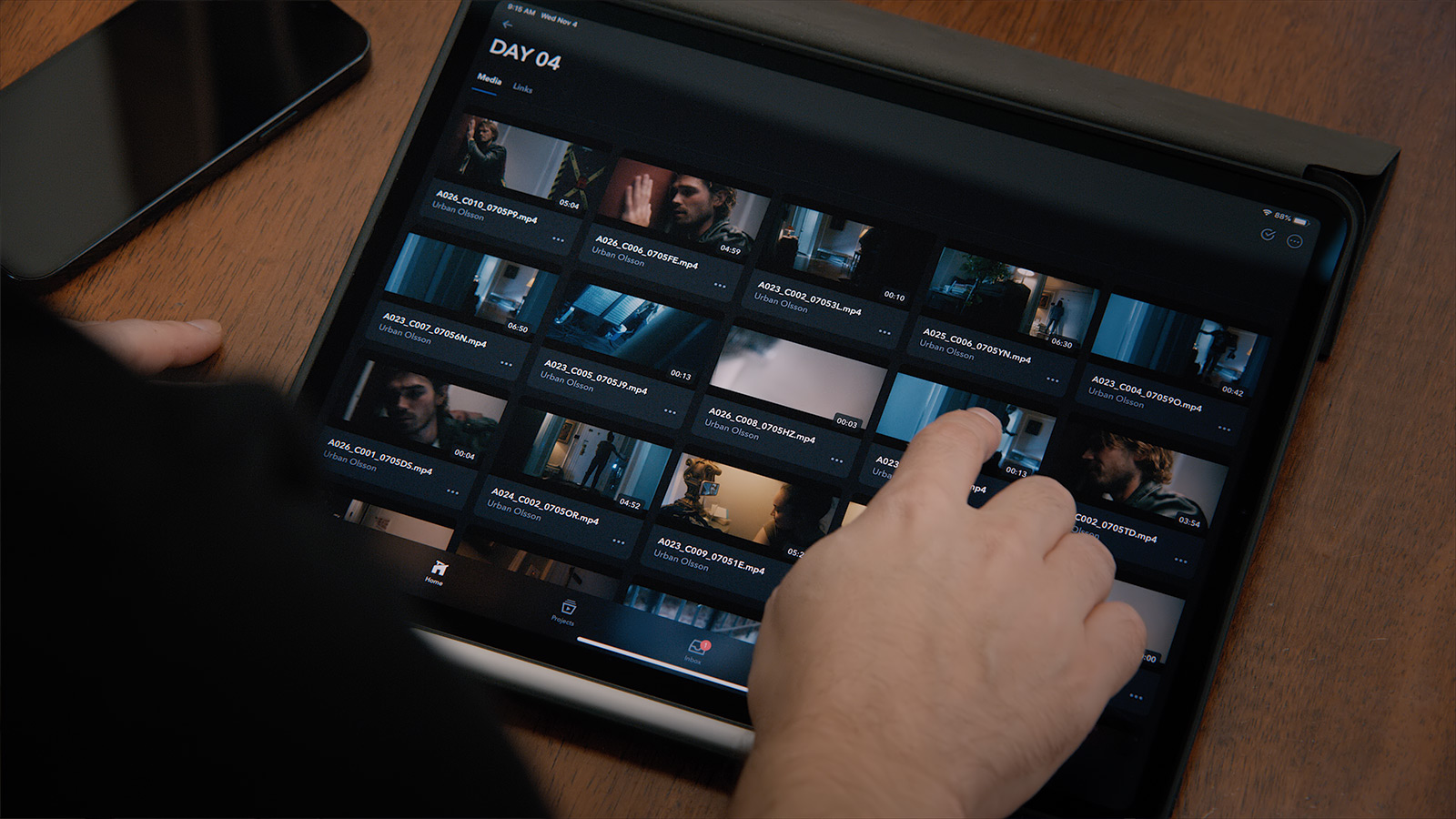
Clark agrees. “It allowed the studio and the team to see what we were doing in nearly real time, which allowed commentary to come in during the day so that we could give notes or course correct,” he says.
The immediacy of response time is a bit of a game changer. For anyone who’s ever worked on a production, there’s nothing more stressful than wondering if you’ll discover a mistake too far after the fact to fix it. For directors, the question of whether they’ve got the shot can interfere with staying in the moment creatively. For producers, watching directors do multitudes of takes makes them worry about the budget. But when producers and directors know that they’ve got the shot and can move on, it creates a sense of harmony that is almost impossible to quantify.
Not only did the Frame.io C2C workflow enable the on-set principal photography process, it extended into multiple areas including editorial, VFX, and design. “Once we got those dailies out and realized that everybody was in the project, we had them on board for the rest of the show,” Votolato says.
“After filming was completed, we used it as a hub to bring in vendors not just from LA but internationally, who could transfer files back and forth using the service, sending not only video, but photo and graphics files, as well. We used so many different video formats in the film: we shot natively with the KOMODO, but also pulled stock footage, footage from social media, cell phones, low-resolution videos that were compressed for platforms like Twitter. The idea was that you’re getting a view of a world in chaos and we were able to draw on that footage, send it through the Frame.io pipeline, share it, and harness it for building the world of Songbird and telling the story.”

Goodman agrees. “We couldn’t have made the movie without being able to know that we were getting what we needed and to be able to immediately start cutting,” he says. “We were giving notes in the editing room on scenes. We watched cuts of the movie through Frame.io. And we were selling the movie also, so we were able to create sizzle reels to get things to the foreign markets.”
Prior to plunging into production, Goodman had a raft of concerns. “Movies are expensive to make in the first place, and with the COVID safety protocols, we’d have to ask people to change their entire process, to change everything they know,” he says. “In some ways it turned out to be budget-friendly because we had to keep the shooting unit as small as possible. But it seemed like it could be creatively stifling. I wouldn’t be able to go to the set, to give feedback to our filmmakers in real time. But it turned out to be creatively liberating because it was so collaborative. Here are dailies in real time. Celebrate them! It became a super interactive process, with everyone trusting that this tool allowed us to work at light speed. And then, because we knew that nothing was permanent and we couldn’t make mistakes that we couldn’t fix, we felt incredibly liberated to keep improving what we were working on.”
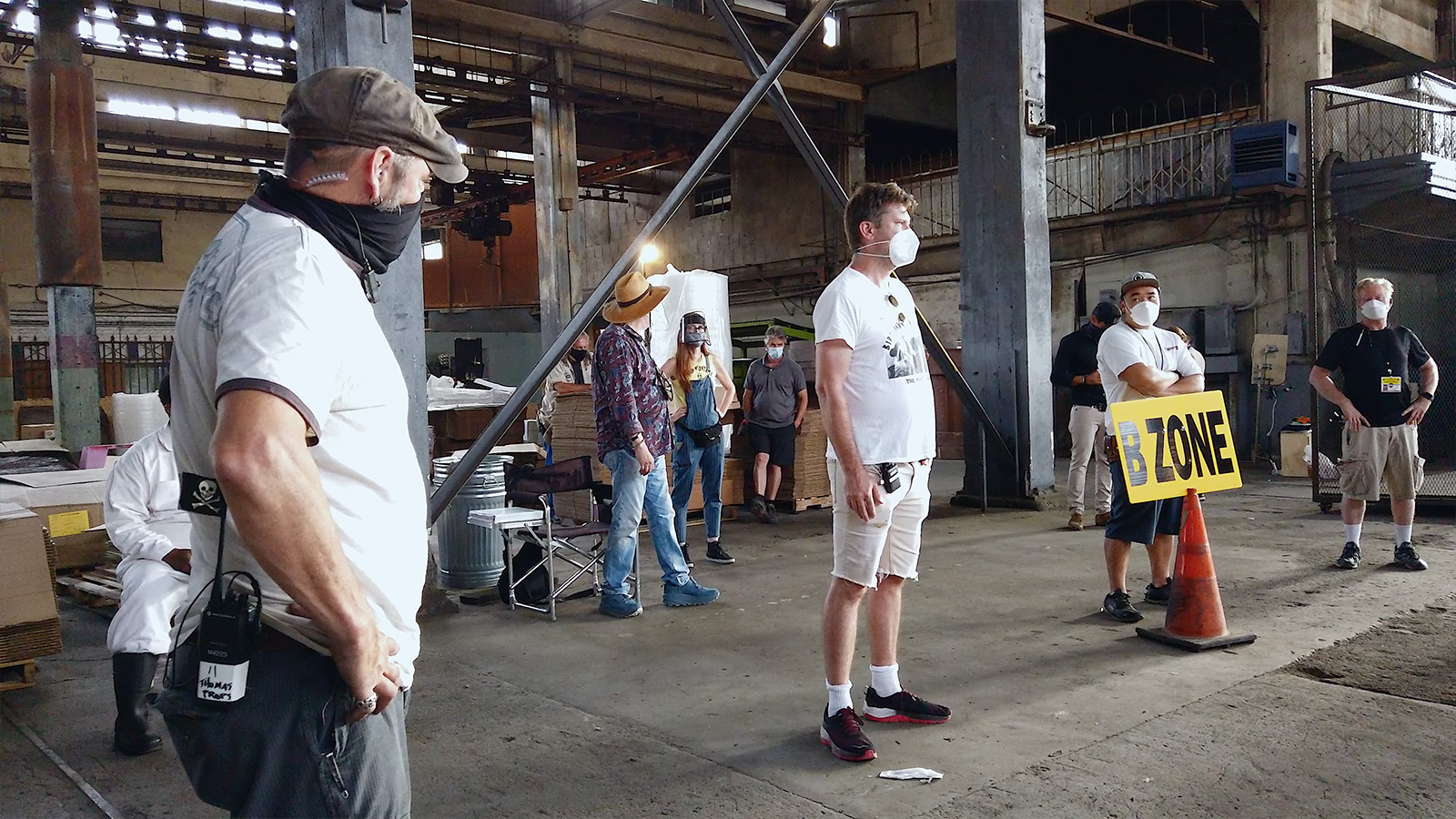
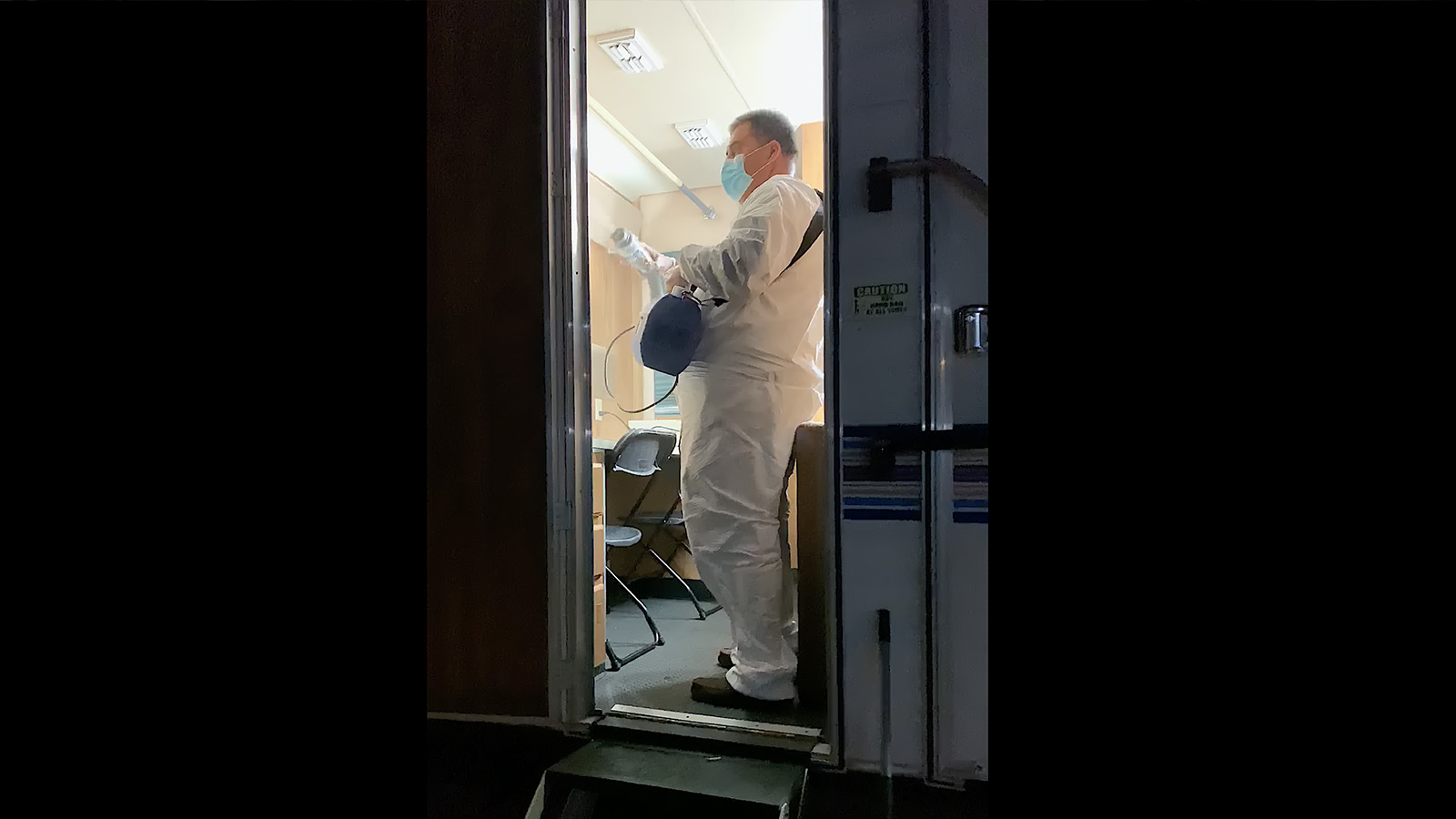
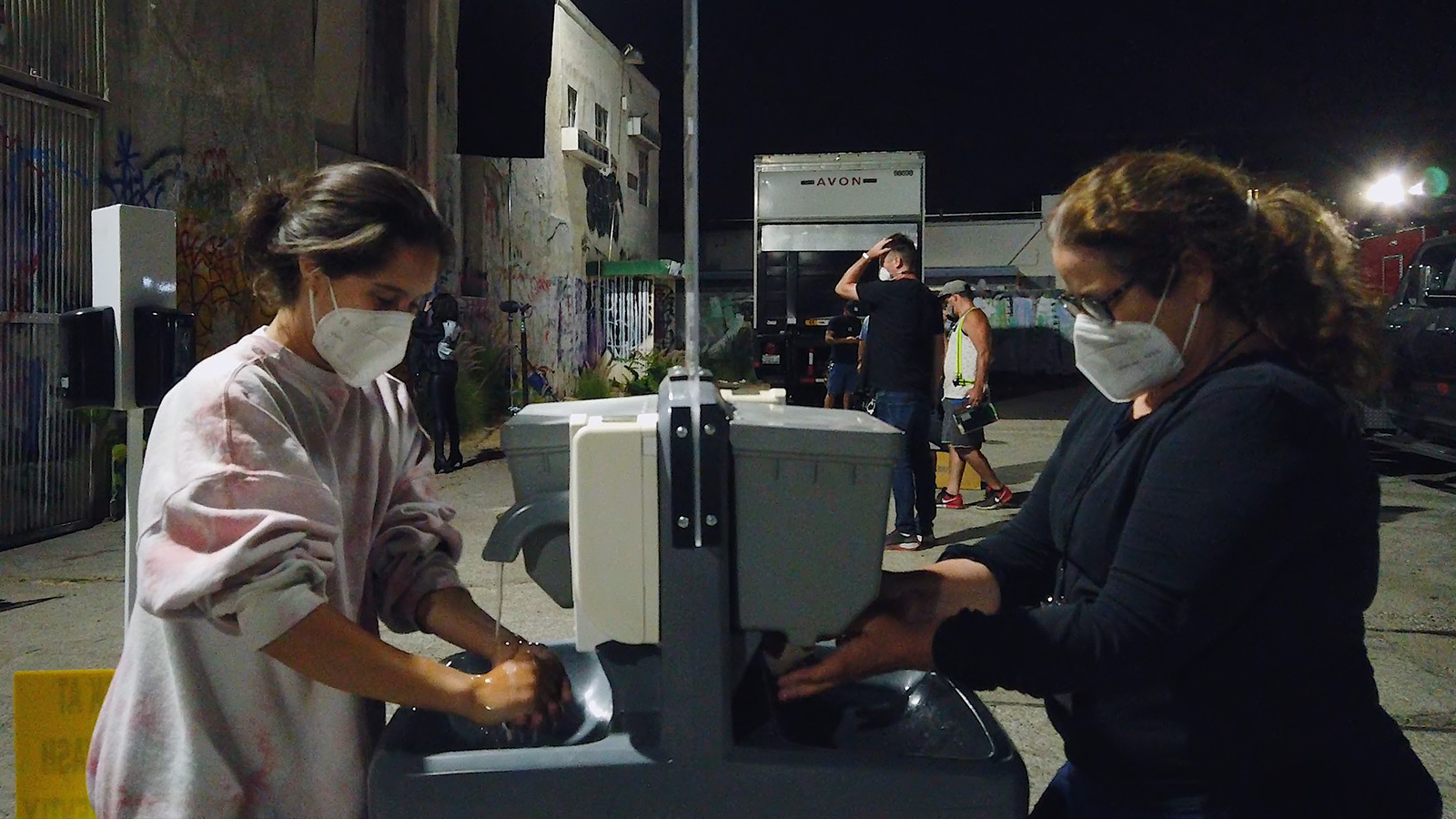
But what about the director? Was there any downside to having so many stakeholders’ eyes on the footage, able to weigh in from wherever they were?
“On the first day there weren’t many people on the set,” Mason says. “It was me and the actors, Jacques and the camera assistant—just a bare-bones crew. We’d literally done two takes and suddenly my phone lights up and it was Adam Goodman giving me feedback to add some Christmas lights in the background of the scene. And it occurred to me that the producers could be at home, sipping their coffee, and watching what I was filming while I was filming it.”
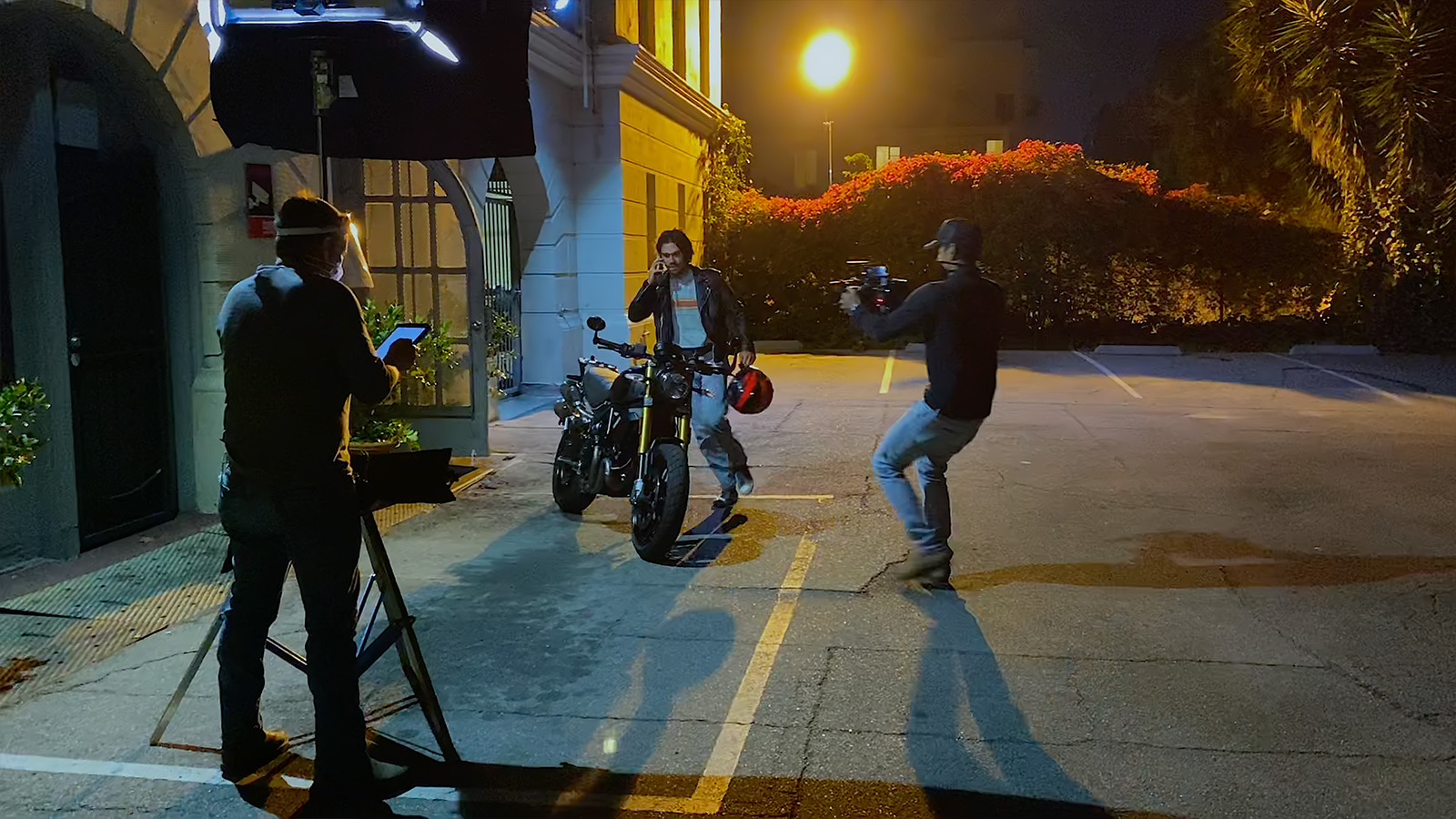
Some directors might find the prospect terrifying, but Mason isn’t one of them. “I’m a very collaborative person at heart, so it didn’t intimidate me,” he says. “I welcome the participation. Frankly, it was a stressful scenario going into this because no one had done it before, and we didn’t know if we could pull it off. Really, it was a matter of all hands on deck, and there was a spirit of collaboration that I’ve never felt before. Normally I might not have my writing partner on set with me, but Simon had a link and was watching. And my wife, whose opinion I really trust, could watch while I was filming, too. It was extraordinary, and actually reminded me of why I’d wanted to start making movies in the first place.”
Creative technology
Some people like technology for technology’s sake. But for this group of filmmakers, the technology is only impressive for how it enables creative collaboration.
Goodman has been active in the film industry since the 1980s. He’s watched the shift from film and tape to digital acquisition. And he sees the creative process changing.
“We don’t have to keep pretending that post-production as a concept needs to come at the end of making something,” he says. “The legacy of shooting everything and then waiting for the film to get processed and waiting two days to see your dailies is inefficient. When you have a technology like this and you’re shooting digitally and your editors are able to implement the dailies and you can start making things better right away, it’s going to have a ripple effect on the entertainment industry.”
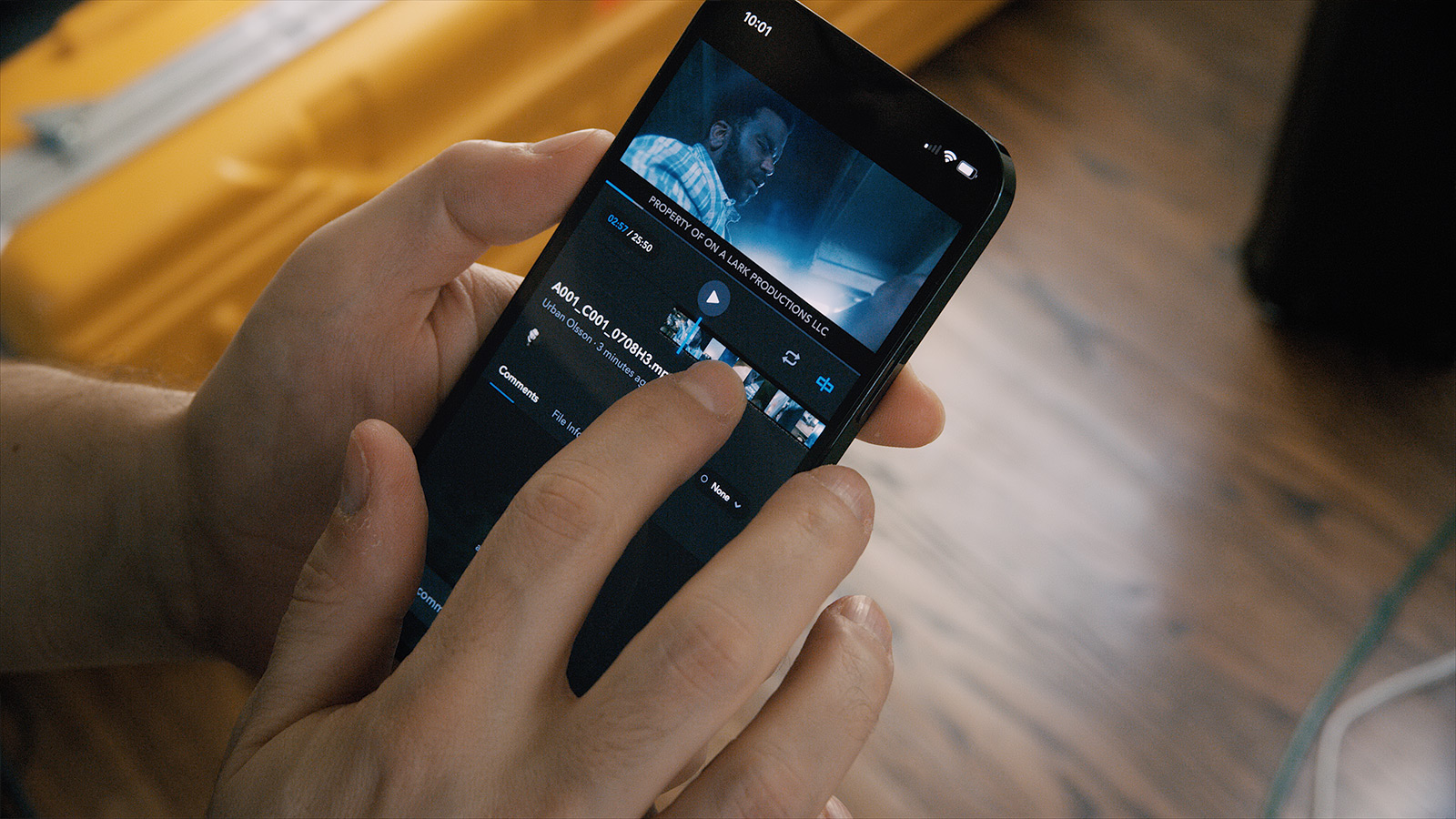
Votolato concurs. “We knew we were going to do the dailies in the cloud, but we were using it for trafficking files, too. Early on, we built folders and collected footage and made buckets for the filmmakers to explore,” he says.
“They could highlight things in Frame.io or leave notations about something they liked. We cataloged the location scouts, videos, and photos. We shot a presentation reel early on, using primarily GoPro cameras, and all of that footage came into the cloud and everyone was able to share it. And what was so exceptional about the process was that from early prep through late into post-production, we could go back to those collections and mine them in meaningful ways. You could go back to something from early on and say, ‘Hey, do you remember this?’ And some of those things made it into the final cut.”
Even more than that, this experience defines what it means to use technology in service of creativity. “Nobody had done this before under these conditions, but what we do as filmmakers is to take technology and marry it with the ancient art of storytelling,” Clark says. “Frame.io was a great partner because it didn’t create technical complications for the onset video or camera team. It was easy, a one-button type of scenario. We talk about bleeding edge technology, but this was leading edge technology. It allowed us to do things we couldn’t do in the past, but in a way that didn’t make us bleed.”
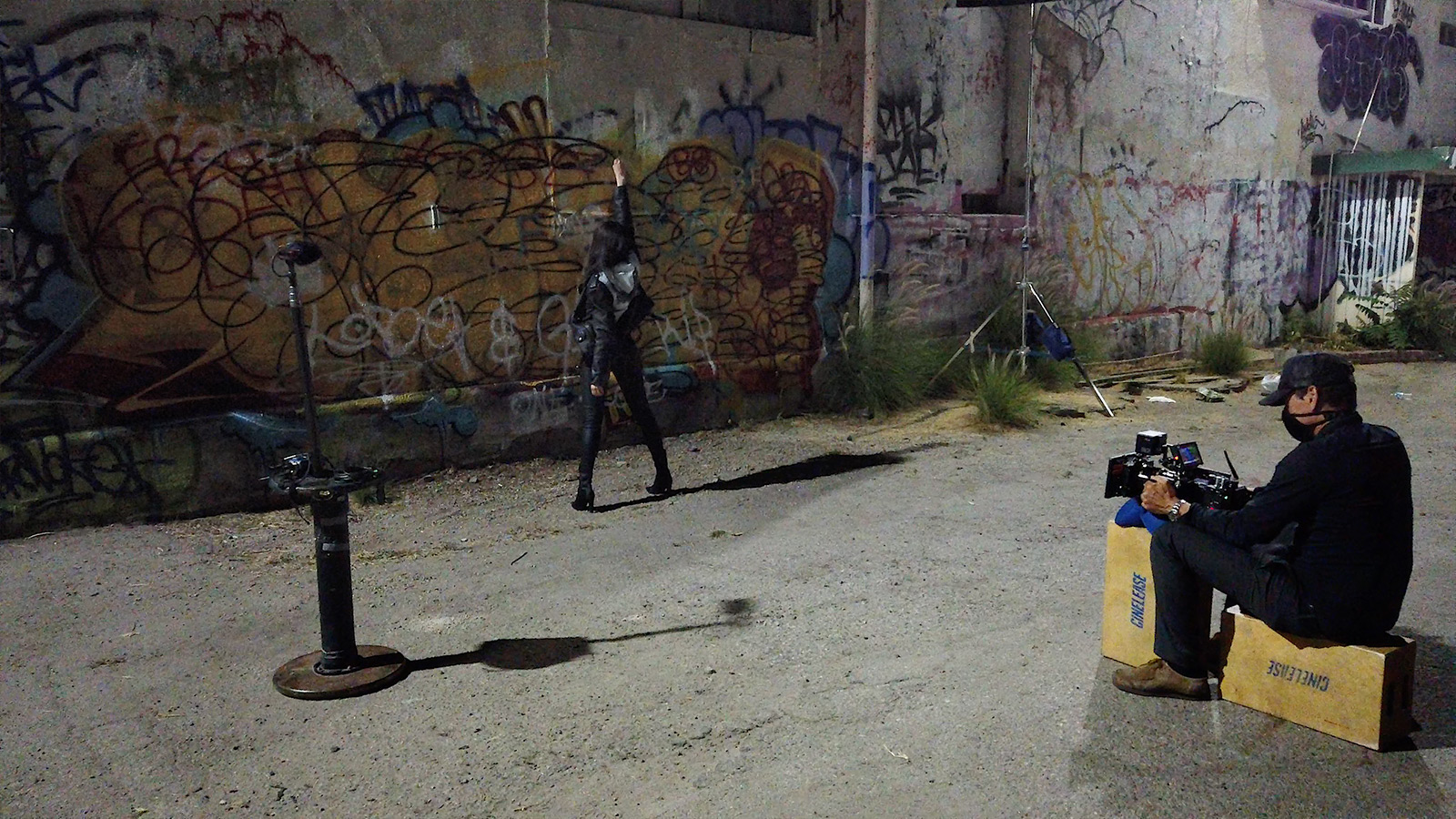
Mason, who’s done hundreds of music videos, has a “guerilla” filmmaking background. “I’m quite experimental in the way that I like to direct,” he says. “I’ve done hundreds of music videos and I shoot most of them myself, so I’ve learned a lot about cameras and lighting. I try to remove the kind of bullshit that comes with all the gear. But in the case of Songbird, I felt very free, even though we shot the film in 18 days, which is incredibly quick for a movie.”
Mason was also able to edit the footage himself on Premiere whenever he wanted to. “If I was home, even if it was 10:00 pm, I could ask one of our assistants to send me the title sequence with split audio and I could just load it into my system and I’m cutting,” he says. Mason was also impressed with how Frame.io facilitated the VFX and audio processes. “I’d get an alert on my phone that six new clips had uploaded. I go into the app on my phone, and two seconds later I’m reviewing the shots and can give notes or sign off.”
The takeaways
When you consider all the challenges that Songbird faced and then look at the numbers, it’s an impressive feat of filmmaking. The shoot itself was a brisk 18 days. From pre- through post-production, the team uploaded 10,000 assets and generated more than another 10,000 review links, which indicates that they fully embraced Frame.io as their cloud-based collaborative hub—to the point where none want to work without it again.
By all the filmmakers’ accounts, they had Frame.io open all day, every day, throughout the production, and each used it in myriad ways to suit their needs—creatively, logistically, functionally. So how do they describe the benefits of a cloud-based workflow and how it influences the future of creating video content?
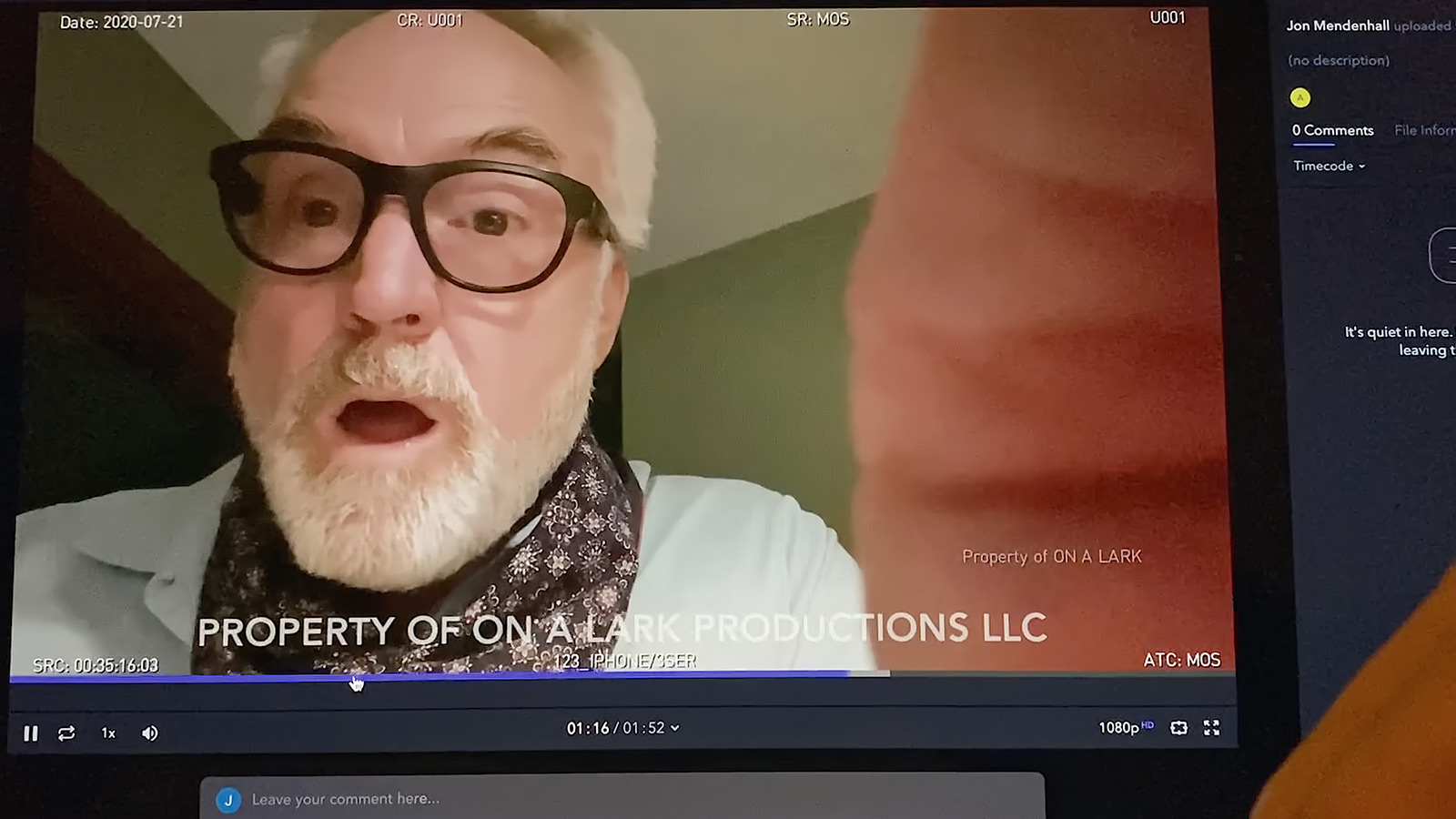
For Jason Clark, it’s about creating a more secure, yet more centralized, workflow. “We are stepping into a new era, and for anyone who’s trying to hang on to the old style of working, it’s just not feasible,” he says.
“In the old days, you had to make copies of scripts on paper, with watermarks. Well, we’re now on an accelerated path toward a paperless set. We need to make sure that everyone gets the updates they need—storyboards, call sheets. In the future, I’ll look at your logo and know that this is my access point, that it’s the repository for everything everyone needs. Frame.io gives you a secure system that provides you with easy access to, and control of, your information and assets. Frame.io is not technologists who are trying to understand the film industry. It’s film people who are using technology to provide solutions.”
Adam Goodman brings up another consideration—that of location independence. “I have absolutely zero doubt that I no longer have to live in Los Angeles to do what I do,” he says. “If someone wants me to see something, I can be confident that I’m not missing anything in the office or cutting room or on the set.”

It also opens up the door to creatives in other markets. “It’s great that LA is a hub, but there are so many other great filmmaking communities that exist and that deserve great talent, but people can’t stay there because there’s not enough work,” Goodman says. “But this changes everything. It changes prep, it changes production and post-production obviously, but it eventually will change distribution. I hope movies are around forever, but I love the notion that people can make things that are great without having to be in one space together. It’s thrilling to think about.”
What Adam Mason found thrilling was the idea that the kid who grew up in a remote village in England watching Spielberg and Zemeckis movies was able to make a feature of Michael Bay quality during a pandemic, while working with a team who could participate from wherever they were. Once a dream like that becomes reality, the future seems almost limitless. “This is such a massive step forward,” he says. “It’s hard to explain how impressive it is, that it’s all there in the cloud and I’m able to access dailies on my phone in seconds. It’s transformative technology that allows the workflow between departments to become completely seamless. To be able to do this was quite a profound feeling.”
Max Votolato, who’s rooted in both creativity and technology, appreciates the ease and the speed with which the crew was able to work. “Frame.io frees up creatives to be more creative by reducing the thought process around workflow. Everyone’s getting things in real time, and it’s facilitated our ability to do so much more in a workday,” he says.
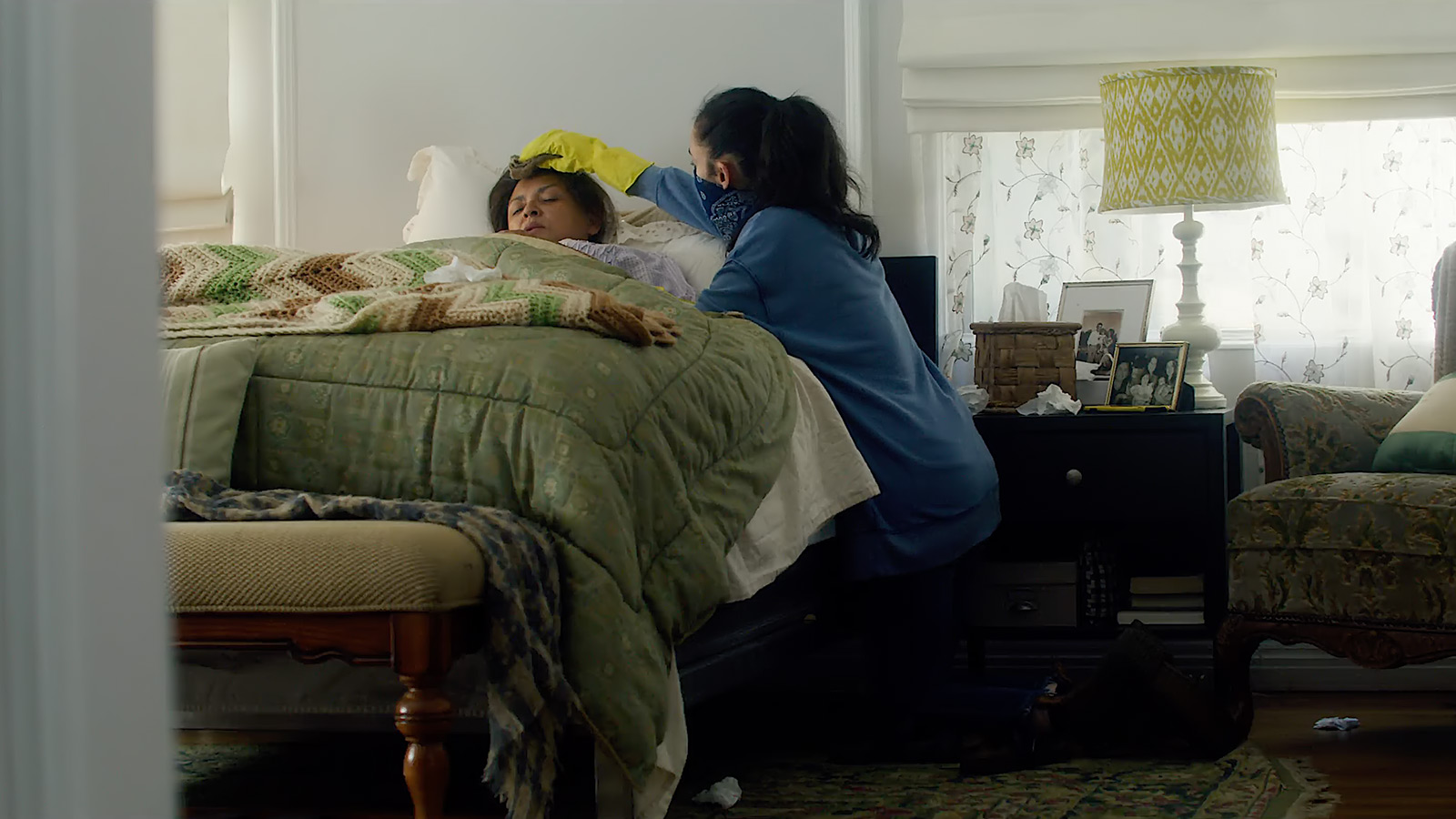
But even more than that, he’s eloquently articulated what this year has meant to the future of filmmaking. “Most people will look back at 2020 as one of the worst years in history. I think we’re going to look back at this as an incredible year,” he says. “We’ve evolved so much and learned so much. I think the entire cloud process is revolutionary for me and my own personal workflow. I love having the film at my fingertips and being able to share it with other filmmakers. We should view the cloud as our canvas, and now this is the canvas you can take with you wherever you go.”
There’s nothing more gratifying than pouring your soul into designing a toolkit—in this case for the better part of a decade—and hearing the people you’re building it for confirm that it’s making a difference in their lives and in their art. Enabling creative freedom by relieving anxiety. Helping creatives of different disciplines in different locations collaborate seamlessly. Allowing storytellers to keep telling their stories.
We feel so lucky to have been a part of the Songbird team’s journey. And we can’t wait to see what they’ll do next. In the meantime, if you’re keen to get started with Frame.io Camera to Cloud, you can sign up for early access.

